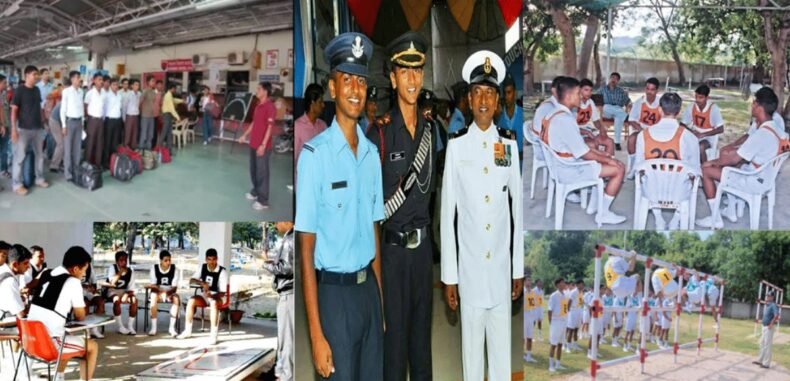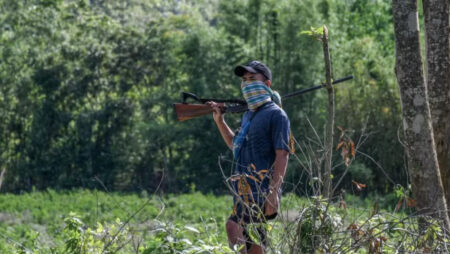SSB in relation to the Armed forces is de-abbreviated as Services Selection Boards, in a crude sense they evaluate the candidates’ knowledge, intelligence, psychology, and physical endurance for selecting a suitable one.
They assess the prevalence of 15 OLQs (means Officer Like Qualities) divided under four categories as:-
- Planning and organizing.
- Social adjustment.
- Social effectiveness.
- Dynamism
These are derived by subjecting the candidates to various testing procedures which most of the defence aspirants are aware of.
The applying aspirants have a range of entries like NDA, CDS, INET, AFCAT, SCC-Jag, SSC-Tech, and NCC and even there are opportunities for below officer ranks/soldiers called “service entry”.
Some of these entries have a Pre-SSB selection test, which is completely knowledge-oriented and based on a sizable syllabus, similar to UPSC and Banking exams.
Here ends the brief information about the process
The genesis of SSB
The armed forces have to defend/fight for the nation against an enemy or a threat. In this regard, every nation had its army, and eventually, the naval forces evolved. This was the primitive makeup of the defence forces in the ancient era.
And most of the serving personnel were soldiers who were selected based on their physical endurance and later got promoted to higher ranks as commanders. Sometimes these commanders used to be a king’s blood trained in special skills of warfare.
And the Supreme commander was the King.

But with the evolution of technology parallel to the civilization of the society the individual kingdoms perished or rather adopted the technology and formal legislation was constituted to administer their nations.
The 14 – 15th century AD made huge changes around the world through the spread of technology through trade. This introduced reveling technologies around the world and rationalized the administration.

These young nations immediately faced the need to revamp their defence forces as they can no longer depend on the age-old and crude troops which held spears and swords.
The troops were required to be more competent both physically and mentally to handle the weapons operated on gunpowder. Thus there was a need to look into the psychological and intellectual aspects of selecting the right individual.

Although there is no exact timeline to affirm when the exact SSB process evolved, it can be approximated as in the late 16th century. And of course, it would have been very primitive compared to the present advancement.
The glimpse of making warriors in Ancient India
India as in the era of kingdoms never felt the need for such a selection procedure, there was a much more rational and reliable process to feed the defence requirements of the kingdoms.
In Ancient India warriors were made rather than selected!
(This coincides with the claim by our late Field Marshal Sam Manekshaw; “Any person with common sense can be trained into an Army officer”)
The Vedic scriptures of India reveal the mode of training a person to become a warrior from a young age.
Rigveda and Dhanurveda

The exact scripture which speaks about the process of making a warrior out of a man is Dhanurveda (the sub-faction of Rigveda). It provides how to practice the art of archery, mace wielding, chariot warfare, and also wrestling.
In those days the senior ranks of the armed wings were reserved for the successors of the king and the king’s family, or sometimes the most passionate individuals of the upper-class section of the society were taken to Gurukuls for training.
The training which use to start from the age of 6 would go until the child reached the age of 16 – 18. As witnessed in several records of history and documentary movies.
The children graduating from these Gurukuls would have complete knowledge of the administration of the kingdom, diplomatic relations with the neighboring kingdoms, the knowledge of geography – climate, and also the knowledge of taming animals if needed.

Undeniably these warriors not only possessed the 15 OLQs but were also better than their present counterparts in multiple aspects because they were forged as warriors and not selected from a crude SSB board!
Although the graduation of Gurukuls is equivalent to stepping Antim Pag in the present officer training academics, the knowledge and training can never overlap!

The hazy picture in the process
The term “hazy picture” isn’t referring to the one shown below as in the PPDT (Picture Perception and Description Test). But rather in the present discussion, implies to obscure factors in the selection procedure.

Although there is some rationale in the Pre-SSB entrance test (which is knowledge oriented) the upcoming process is nebulous off-late.
The process is vaunted to be the best foolproof selection system by the staff, with a mere 3-4% selection rate which is termed as the best of the best!
And there are very good number of instances of notable personalities like our Ex-President Dr. APJ Abdul Kalam who were rejected.
This is further substantiated as the candidate was overqualified or rather too smart & intelligent over the standards of the defence forces!!
But to assert their claims the forces never reveal the assessment report of any candidate claiming confidentiality.
The crux and contradictions in SSBs

The entire process has both written and physical tests where the candidates are tested for the alignment of their thoughts, words, and actions in all the stages.
This refers to the triangle above, wherein the Thinking (The Mind / Manasa), Speaking (The words / Vacha) and Karma / Kaya (The actions) must always be in sync in all the responses of the candidate.
In other words, the candidate is not expected to have second thoughts and speak stilted and act contrary to what he/she has claimed, i.e. the candidate is just expected to be honest.
This was the thumb principle when the process got introduced.
But there are assessments like TAT & SRT which require a candidate to give a written response to the picture displayed on the screen and a written response for an unfamiliar situation (mentioned in words on a question paper).
In these cases, there are obvious contradictions because:-
- How a person physically reacts to the live situation and theoretically analyses it, varies certainly.
- While reacting physically the person takes into account various possibilities, and resources available on the spot.
- Theoretically, the person just presumes the situation to his convenience to give a response.
Further, in the entire process of this test the candidate is a testing hall with a question paper, thereby he/she is physically in the room, but mentally present in the situation confronted and their action is written. (H2)
By any means how can this qualify as a genuine response of a prudent individual?

There is a difference in how we react to seeing a tiger and when it is just an imaginary thought!
Thus there is a stark contradiction in which the Thoughts, Words, and Actions are unaligned in the process!
The PPDT: A dark cloud
This is the 2nd process in the screening test. Here a candidate is expected to narrate a story for a hazy image (as shown earlier) as per one’s perception and discuss it later with other grouped candidates (8 – 15 members) within 10 min to make a common story.

And there are assessors (Psychologist, Interviewing Officer, and Group Task officer) evaluating the candidates’ qualities such as social tolerance, etiquette, eloquence, and flow in the group.
Only if the candidate clears this stage he/she shall be eligible for the main stage (of the next 4 days), else they might need to take their way back home!
And in a process like this there exist ruckus and commotions in the discussion which might not favor well for both the candidates and the evaluators, but ultimately the candidates get penalized.
Furthermore, some candidates allege that the assessors had not even referred to their response sheets, and not being airy during the process which deprived their opportunity of being defence officers.
This was also admitted by a senior officer in one of the senior interviewing officers in a webinar session that “human errors are inevitable in the screening process”.
Further, this screening test was just introduced approximately after the Kargil war (1999) to restrict the huge influx of reporting candidates for the main process assessment (4 days).
This deprives the opportunity of most competent candidates just because of the accommodation and human resources that the boards can afford.
Apart from this, the candidates are allotted distant centers which make them travel across the country for the process, (which is very unappealing if rejected on the very first day).
This brings an economic burden to several underprivileged candidates, as the minimum to and for the charge is ₹5000 just for a single entry.
This is way too much compared to other entrance exams, wherein the centers are within 20 km of the candidates’ residences.
So those who are repeatedly attempting (being unaware of their personality traits, as the boards don’t reveal it!) face a severe financial burden.
The boards might be reducing their workload, but it is a suffering for the candidates.
https://twitter.com/captain_swamy/status/1481321088173109252?s=20&t=vjXyR-a97HGnhQHZR5FGRw
The scams
Corruption is very common in any process involving chances, this is no exception for scams, although most of them go unrevealed there are a few such as the Kapurthala (Punjab) scam in which 23 (staffs + candidates) were booked.
The Spat of coaching centers
While the process intends to test the natural ability of the candidates there are innumerable coaching centers which inject biased inputs into the candidates to give a staged performance and reproduce well fed responses to the images and the situations.
This defeats the concept of purity in the candidates performance!
The U.S model of SSB
Unlike open entries as in India, in the U.S.A every defence aspirant must graduate from any one of the universities operating for defence, like Officer training school, Airforce college, or the defence academy.

These candidates have a high selection rate of up to 65% compared to the abysmal 3 – 4% as in India.
Thus, it is necessary to bring Transparency and Accountability in this process for all those candidates who have it in them!
Read More –
https://tdznkwjt9mxt6p1p8657.cleaver.live/agnipath-rallies-may-be-suspended-if-no-support/













